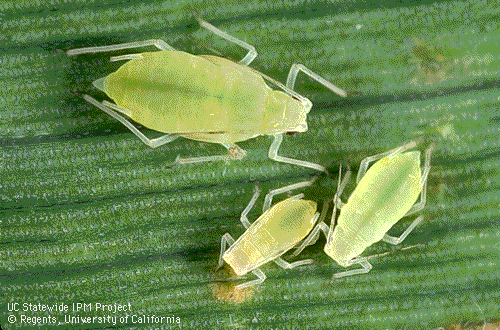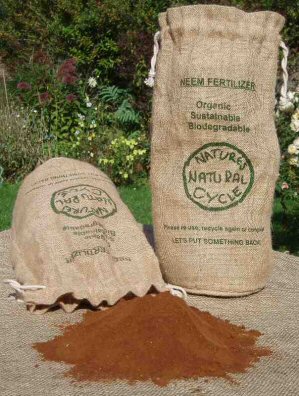Perennials are flowering plants that are meant to last — several years, at least, and sometimes much longer. So ideally, they’re a wise and practical “one-time investment,” unlike the annuals you have to buy and replant every year; therein lies their great appeal and value.
Yes, you may have detected a note of hedging. Perhaps you’ve even heard the old gardener’s joke: “A perennial is a plant that had it lived, would’ve bloomed year after year.” After you go to the effort of acquainting yourself with handsome perennials and bringing them home, you sure don’t want them to totally miss the boat and turn out to be expensive annuals!
Don’t worry. Get your perennials off on the right foot and give them the care they need to thrive (it’s perfectly easy), and you won’t be disappointed; you’ll be thrilled.
Sunday, September 21, 2008
Japanese beetles and Spider mites
Japanese beetles
If you live east of the Mississippi, you’ve probably seen Japanese beetles — they’re approximately fingernail-size and copper-colored, with green heads and legs. They eat all plant parts, though chewed-up leaves are their hallmark. Hand-pick Japanese beetles (a great money-making project for your kids!) and drown them in a bucket of soapy water.
Spider mites
You may not spot the actual culprits — spider mites are really tiny reddish, brownish or yellow spider-like pests — but you will see their webs on the leaves of your annuals. These pests are particularly prevalent when the weather is hot and the soil is dry. Combat them by picking off and destroy-ing affected foliage; rinsing or spraying surviving leaves; or spraying with insecticidal soap.
If you live east of the Mississippi, you’ve probably seen Japanese beetles — they’re approximately fingernail-size and copper-colored, with green heads and legs. They eat all plant parts, though chewed-up leaves are their hallmark. Hand-pick Japanese beetles (a great money-making project for your kids!) and drown them in a bucket of soapy water.
Spider mites
You may not spot the actual culprits — spider mites are really tiny reddish, brownish or yellow spider-like pests — but you will see their webs on the leaves of your annuals. These pests are particularly prevalent when the weather is hot and the soil is dry. Combat them by picking off and destroy-ing affected foliage; rinsing or spraying surviving leaves; or spraying with insecticidal soap.
Dealing with Slugs and snails
Ravenous and disgusting creatures, slugs and snails can decimate your annual flowerbeds and even get into container displays. If you don’t catch these pests in the act, you’ll certainly spot their giveaway slime trails. These critters are mainly active at night and especially relish damp conditions.
Watering early in the day and spacing plants so they aren’t crowded may help, but sterner measures are necessary if you have many snails and slugs and they persist. You can set traps that you buy down at the garden center or set out pie trays of cheap beer. Alternatively, protect your plants with barriers of copper strips or sharp diatomaceous earth (fossilized algae — again, available where gardening supplies are sold) — slugs and snails won’t cross these. A relatively harmless pelletized form of iron phosphate sold as Sluggo is a safe and effective control.
Don’t pour salt on slugs; salt can damage your plants. Also, some slug and snail products, like metaldehyde and iron sulfate, can be poisonous to pets.
Opt for the safer controls first.
Watering early in the day and spacing plants so they aren’t crowded may help, but sterner measures are necessary if you have many snails and slugs and they persist. You can set traps that you buy down at the garden center or set out pie trays of cheap beer. Alternatively, protect your plants with barriers of copper strips or sharp diatomaceous earth (fossilized algae — again, available where gardening supplies are sold) — slugs and snails won’t cross these. A relatively harmless pelletized form of iron phosphate sold as Sluggo is a safe and effective control.
Don’t pour salt on slugs; salt can damage your plants. Also, some slug and snail products, like metaldehyde and iron sulfate, can be poisonous to pets.
Opt for the safer controls first.
Monday, September 8, 2008
Dealing with Aphids and Cutworms

Aphids
Aphids come in all colors and are often prevalent, so people tend to worry about them too much. It’s easy enough to rub these plant-sucking insects out, literally, by squishing them with your fingers. Or hose them off with a strong spray of water. Some companies sell ladybugs as natural aphid controls, though ladybugs aren’t too dependable — keeping them in your yard is a challenge.

Cutworms
Cutworms are actually moth larvae. These little fellows rest in your garden soil by day and emerge at night to dine on your annuals, especially newly planted, juicy ones. A clever and safe control is to press a collar of cardboard (a sixounce tuna fish or cat food can works well as a template) around the plants. The collar should go 1 to 2 inches into the ground and 2 or 3 inches above ground level; the natural growth of your annuals may soon hide this barrier from view.
How to Groom Annuals?

Like any other garden plant, an annual looks better if you stop by every now and then and give it some personal attention — some grooming. Annuals soon replace pinched-off bedraggled leaves with new ones. Plant diseases and insects are harbored in wilted, browned, spotted, or yellowed leaves (indeed, pests and disease may have caused the damage). So always get rid of those unhealthy leaves when you see them, and don’t forget to scoop up any that have fallen at the base of your plants. Such tidiness can arrest a problem or even clear it up.
You can get more flowers through deadheading, or removing spent blossoms. Annuals aim to go to seed, and when you cut flowers for bouquets or remove spent blossoms, you’re thwarting this natural process. The plant responds by generating more buds and flowers. If you’re diligent, the plant may never get a chance to go to seed.
How to Mulching Annuals?

A layer of mulch 1 or 2 inches deep around the base of your annuals is a great idea. Mulch keeps encroaching weeds at bay and conserves soil moisture. Plus it looks nice! Favorite mulching materials include bark chips, shredded bark, straw, pine needles, grass clippings, and cocoa hulls. Keep the mulch at least an inch away from the stem of the plant to keep insects and disease from getting into the plant.
How Fertilizing Annuals?

Strictly speaking, fertilizing annuals isn’t necessary, but for best performance, it’s highly recommended. Remember, annuals are high-energy plants that respond impressively if you fertilize them regularly.
The effects of adding plant food can be dramatic but not instant. Keep an eye on your annuals for a week or two or even three before concluding that you’ve given them enough.
By and large, annuals lap up nutrients eagerly and use this extra nutrition to produce more and healthier growth and to bloom like gangbusters. So you’ll be amply rewarded for your efforts!
How to Water Annuals?

Sufficient water is always important for growing plants, but even more so for productive annuals; consider it fuel for the ongoing show. Moisture hydrates the roots, plumps up the leaves, makes buds swell and open, and sustains the flowers. Don’t allow your annuals to wilt before being revived or they’ll be stressed out and unable to perform their best. Regular watering is ideal. Keep the following in mind when setting up a watering schedule for your annuals:
- Spring watering: If your area gets normal, drenching spring rainfall, your newly transplanted-into-the-garden annuals may not need supplemental water from you. But remember how important early watering is — it encourages the roots to gain a foothold in their new home before the plant can properly turn its attention to growth and flowering. So water on day one and keep an eye on things in the ensuing days and weeks.
- Summer watering: Established annuals tend to be pretty tough and often forgive your watering lapses. But they’ll certainly be healthier and look much better if you give them water at regular intervals and nurture them through periods of drought.
- Fall watering: In some areas, rainfall may take care of your annuals at this time of year. But if not, continue to water as needed so your annuals look terrific right up to the finish line (the first frost). Your best watering methods depend on how many annuals you have and how close together they are. Options range from a gentle spray from a watering can to soaker hoses to a sprinkler. Watering in the morning hours is best so the water can soak in and hydrate the annuals through the hot midday.
Getting annuals in the ground

Annuals are simple to plant. Just follow the label directions for spacing, and dig a hole deeper and wider than the root ball. Add some compost to the hole or mix the native soil with organic matter. If desired, you can add some dry fertilizer in the planting hole and water it in, or you can fertilize the annual after .
Annuals are most frequently sold in market packs, in which six or so plants are each in separate cells. Merely turn the pack upside down and gently push each plant out of its cell from the bottom. Don’t pull them out from the top because the stem may break off from the roots. After removing the plants from the packet, plant them in the ground so that their rooting mass is slightly below the soil surface. Firm the soil around the plants and then water them in well.
Subscribe to:
Comments (Atom)
